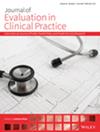Development, Evaluation, and Implementation of Guideline Adaptation and Its Frameworks: A Meta-Epidemiological Study of English-Language Guidelines
Abstract
Background
Guideline adaptation refers to the process of modifying or tailoring existing clinical practice guidelines (CPGs) in addressing local health system needs, improving the relevance of recommendations, and overcoming barriers like resource constraints. However, limited information is known about the current development, evaluation, and implementation of guideline adaptation.
Aim
This study aims to evaluate the methodological quality, utilization, and implementation of English-language adapted CPGs and compare frameworks used for adaptation.
Methods
This meta-epidemiological study systematically searched and included adapted CPGs and original CPGs in English to the end of 2022 by applying the two most widely used adaptation frameworks, ADAPTE and GRADE-ADOLOPMENT. Their characteristics, utilization, and implementation were analyzed, the completeness of the adaptation steps was assessed via quality evaluation, and the two adaptation frameworks were compared in exploring their advantages, limitations, and suitable applicable situations.
Results
A total of 30 adapted CPGs were included, and 75 original CPGs were identified. Most of the adapted and original CPGs were developed by developed countries/regions and had close connections, covering a wide range of populations and fields. However, resource-limited countries/regions participate less in guideline adaptation, requiring additional consideration. The adapted CPGs that applied the ADAPTE and GRADE-ADOLOPMENT frameworks had insufficient adaptation quality, with mean reporting rates of 64.7% and 78.6%, respectively. Comparisons of the adaptation methods revealed several key gaps, such as rigor, conciseness, efficiency, and transparency, and the advantages of applying guideline adaptation in resource-limited areas have not been fully revealed, indicating the need for a future unified adaptation framework that considers the advantages and limitations of current methods.
Conclusion
Several shortcomings in the methodological quality of current adapted CPGs were identified, alerting appraisals before applying their recommendations; and key gaps existed regarding available guideline adaptation methods, requiring a future unified framework to be developed. Further research should examine non-English guidelines to enhance the global applicability of these findings.

 求助内容:
求助内容: 应助结果提醒方式:
应助结果提醒方式:


